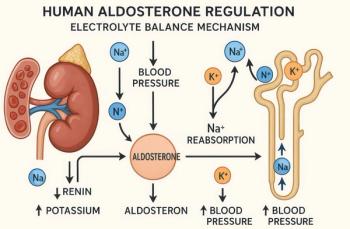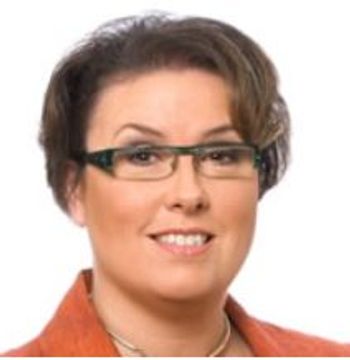
U.S.-Style Hypertension Control Seems Superior to Europe's
PHILADELPHIA -- An aggressive approach to hypertension management in the U.S. has paid off in better blood pressure control than achieved in Europe, according to U.S. investigators.
PHILADELPHIA, Jan. 23 -- An aggressive approach to hypertension management in the U.S. has paid off in better blood pressure control than achieved in Europe, according to U.S. investigators.
Physicians in the U.S. jump in earlier with antihypertensive therapy and are more likely than European counterparts to prescribe two or more medications, according to Y. Richard Wang, M.D., Ph.D., of the University of Pennsylvania, and colleagues at other centers.
Compared with U.S. patients, European patients tended to have higher systolic and diastolic pressures, were less likely to have their hypertension under control, and were less likely to get an increase in medications if necessary, the authors reported in the Jan. 22 issue of the Archives of Internal Medicine.
But U.S. physicians also need to be aware that only about half of all patients with hypertension actually reach the goals set for them by the seventh report of the Joint National Committee on Prevention, Detection, Evaluation, and Treatment of High Blood Pressure (JNC 7), the investigators cautioned.
"According to national surveys conducted in the 1990s, the rates of hypertension treatment and control were lower in five European countries and Canada compared with the United States," the authors wrote. "These findings were consistent with the more aggressive hypertension treatment guidelines in the United States, although the use of aggregate level data by age group and sex precluded controlling for important patient-level differences, such as pretreatment blood pressure level and cardiovascular comorbidities, across countries."
They had speculated that more favorable outcomes in the U.S. could be the result of differences in practice, including more aggressive hypertension treatment guidelines, lower thresholds for drug treatment (e.g., pre-hypertension), and more intensive drug therapy.
To test this hypothesis, the investigators conducted cross-sectional analyses of data from the CardioMonitor 2004 survey, which included information on 21,053 patients with hypertension visiting 291 cardiologists and 1,284 primary care physicians in five western European countries (France, Germany, Italy, Spain, and the United Kingdom) and the U.S.
The main study outcomes were the most recent systolic and diastolic blood pressure readings, hypertension control (defined as the latest blood pressure level <140/90 mm Hg), and whether the patients had a medication increase (either a dose escalation, or an addition to drug therapy or drug switch) for inadequately controlled hypertension.
They found that at least 92% of patients in each country received anti-hypertensive drug treatment, but there were also marked differences in approach.
Patients in the U.S. had the lowest pre-treatment blood pressure, at a mean of 161/94 mm Hg, compared with mean systolic values ranging from 167 to 173 and mean diastolic values ranging from 96-99 mm Hg across European countries.
The latest blood pressure level was also lower among Americans than their Europeans cousins at a mean of 134/79 mm Hg versus 139-144/80-84 mm Hg.
"Alternatively, only 65% of U.S. patients had an initial pretreatment blood pressure level of 160/100 mm Hg or higher (versus 81%- 90% of European patients)," they wrote.
They also found that 66% of Americans were on combination therapy, defined as two or more antihypertensive agents, compared with 44% to 59% of Europeans.
Across all countries on both sides of the Atlantic, roughly a third of patients (29%-31%) received a thiazide diuretic, but the use of other agents varied widely.
The U.S. had the best rate of hypertension control, at 63% compared with 31%-45%, and among those patients whose blood pressures were not controlled adequately, Americans also were likely to get a medication increase during the visit, at 38% vs. 15%-28%. Changing the definition of hypertension to >130/80 mg Hg did not change the patterns, the authors noted.
In all, 53% of patients in the United States, and 27% to 40% of patients in European countries, had their hypertension under control.
In multivariate regression models controlled for age, sex, current smoking, and physician specialty, the authors observed that systolic blood pressure levels among European at the most recent visit were 5.3-10.2 mm Hg higher than those in the U.S. and that diastolic pressures were 1.9-5.3 mm Hg higher.
In addition, the odds ratio for having hypertension under control ranged from, 0.27-0.50 for Europeans compared with their American cousins (P<0.001), and the odds ratios that the European patients would receive a medication increase for uncontrolled hypertension were 0.29-0.65 (P<0.001).
"In addition, controlling for initial pretreatment blood pressure level attenuated the differences in latest systolic and diastolic blood pressure levels and the likelihood of hypertension control," the investigators found.
They acknowledged that the dataset they used may skew the findings toward sicker patients, who are more likely to visit physicians, and that the visit-based study yielded higher hypertension treatment and control rates than in population-based studies.
They also noted that differences in health insurance and drug coverage among various countries could account for some of the differences.
"For example, although health insurance coverage is universal across European countries, regulations on drug pricing and limitations on drug consumption are prevalent," they noted. "In contrast, drug pricing and consumption are relatively free in the United States, but more than 10% of the U.S. population is uninsured. How health care system factors affect disease treatment and control is an important topic for future research."
Newsletter
Enhance your clinical practice with the Patient Care newsletter, offering the latest evidence-based guidelines, diagnostic insights, and treatment strategies for primary care physicians.





























































































































































































































































































